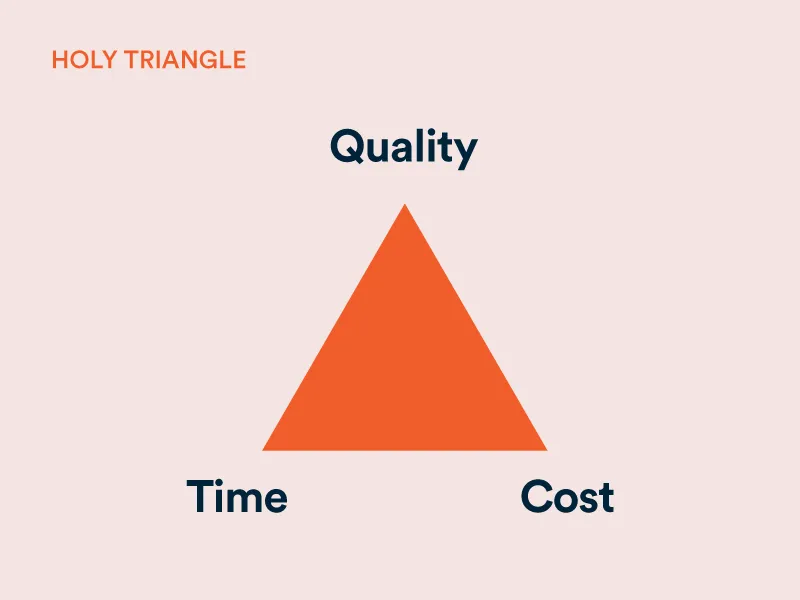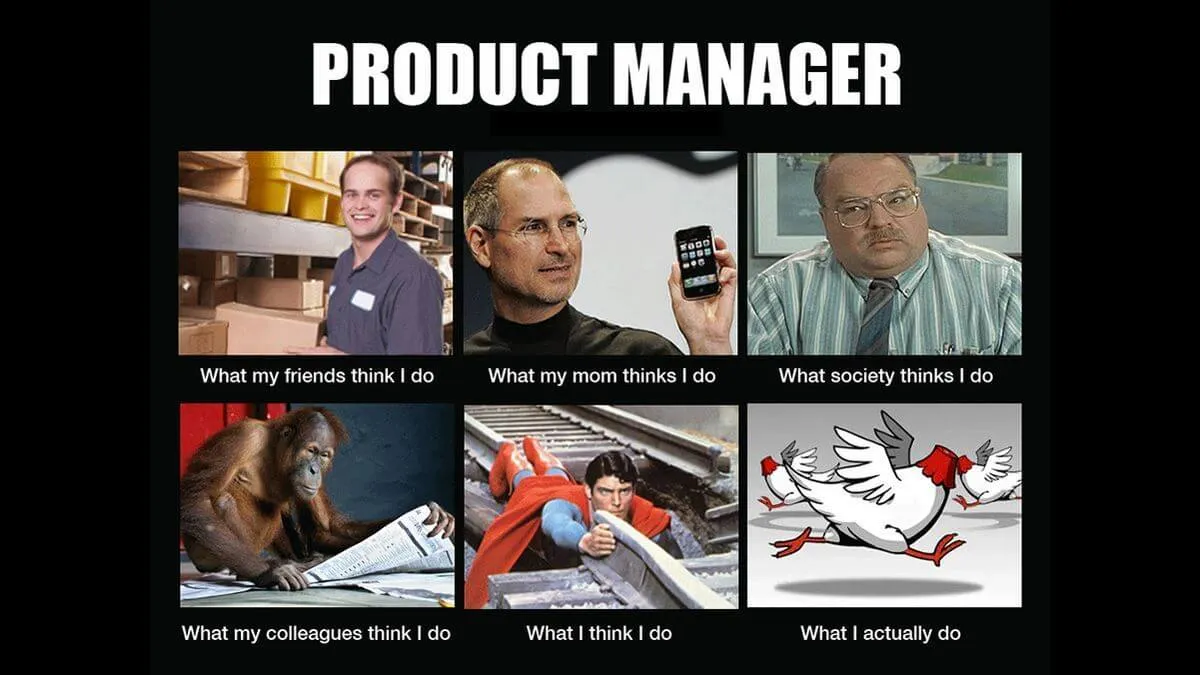Proven Product Storytelling Techniques

Storytelling is the most powerful way to put ideas into the world.
– Robert McKee, professor at University of Michigan
Based on this quote, I’m sure you have an idea of what I’ll be writing about in this post … storytelling! But because our blog is connected to SaaS, software, UX, and product (among others, of course), I’ll be talking about product storytelling specifically.
It seems that the list of roles of a product manager is never-ending. In previous blog posts, we’ve spoken about how SaaS product managers are meant to be leaders, managers, marketers, good communicators, forecasters, teachers … the list truly does go on. So in the nature of going big and not going home, let’s add another role to the arsenal of a great product manager. Yup, you guessed it, being a good storyteller.
But why? Why should a product manager have to tell good stories? That should be left to English literature graduates or the likes of J.K. Rowling, Stephen King, or G.R.R. Martin, right?! Well, no, not at all. We are all storytellers in one way or another, and telling a story about your product is how you can motivate, captivate, and inspire not only your own team but your users as well.
So let’s get right to it and get some creativity and ideas flowing! Below, I’ll discuss how you can captivate your users with your product, why you should do so, and give some examples of how good storytelling will make people fall in love with your product.

Table of Contents
Once Upon A Time: How and Why You Should Be Good at Product Storytelling
How do you tell a good story? And most importantly, why should you, as a product manager, learn how to tell a good story?
Let me give a quick example. I recently finished watching a show on Netflix called What If. The protagonist, Lisa, is the founder of a medtech company, and she is trying to get investors interested in her solution. In the first episode, she pitches her idea and company to numerous investors using stats, facts, and data – but no one was really listening or interested. Until she told the story of WHY she founded her company, WHY she has this purpose, and WHAT problems her company will solve. Her story was about her sister, who died from Leukemia at a very young age, and this is why she used her skills as a scientist to found a company that could change the healthcare system.
Or take another example. Imagine you own a 17th-century castle (nice!). You invite guests over and tell them to wander around and check out all the rooms. Sure, they can freely roam around and enjoy the experience, but wouldn’t it be better if you prepared a discovery story for them so that they could learn so much more about your castle, its intricacies, its history, etc.?
And this is why you, as a product manager, should tell stories. It doesn’t matter whether you’re presenting your product to potential users, external stakeholders, or audiences who aren’t familiar with your product – no matter who your audience is, they’ll be more likely to remember the story you tell. Take them on a journey, make them care. Why should they choose YOUR product? What will it do for THEM?
And remember, your users, or whoever you’re presenting your product to, aren’t necessarily moved by facts, the data, the specs, and all those jargon-y technical terms. Sure, they’re impressive and nice to have, but at the end of the day, that’s not the info about your product they’ll retain. You see, there’s a science around storytelling – our brains are hardwired for it, and we’ve been communicating via stories since the dawn of time. There’s a reason why stories are passed down from one generation to another – it’s because they’re memorable. They stick with us (especially the good ones).
General Principles of Storytelling: Creating Your Product Story
In this section, I’m going to use some general (and proven) principles of storytelling that you can use to tell a product story (using a storyboard is the best way to help you visualize the process).
Purpose
As a product manager, before you even begin your story or storyboard, you need to ask yourself: What is your product vision/ objective, and, more importantly, what is the WHY behind your product and each feature/ functionality you develop? Always start at the very beginning by stating the overall objective/ vision of your business and product, irrespective of whether you’re presenting to your internal team, external stakeholders, or a new market. WHY does your product exist, WHY do users need it, and HOW will it change your user’s life?
You should also consistently remind your team of the reason behind your product and the company’s mission: By doing so, you’ll instill a passion in them for the product, which will motivate them to develop a product that users want.
For example, at Userlane, our purpose is to close the knowledge gap between humans and machines by allowing anyone to use software instantly. That’s our mission, and we keep this mission in mind throughout our entire product development process.
Some good questions you can ask at this point in your storytelling process: Who am I building this product for? And why? Why should people care?
If you can answer these WHYs successfully, and if you can communicate them clearly (and with emotion) to both your team and your users, then your stage is all set.
The Conflict/ Problem
Great stories have great conflict. Harry Potter and Voldemort. The battle for the Iron Throne in Game of Thrones. You get the idea. When it comes to product storytelling, your conflict is your user’s problem. Before creating your wireframe, you need to fully define your user problem. What does your user want? WHY do they want it? What is their pain point?
Once you’ve established the problem, communicate it to your team. And how can you communicate the problem effectively? Yup, you guessed it: By telling a story ;).
PLOT TWIST: Can you guess who the hero/ protagonist of your story is? You? Your company? Your product? Well, as a PM, you’re definitely a hero in your own right, but in this case, the protagonist is ALWAYS your user. No exceptions.
The Plot/ Context
In storytelling terms, this ties into characters and imagery, too. In this case, you can create your user personas and then develop a story about why each persona needs your product (avoid overdoing it on the data, stats, and analytics and try and use more emotion to motivate your team). More than just looking at what people want, you need to look at why they want it. People are experts at problems, and you’re an expert at providing solutions to those problems! You need to find out WHY a feature request your user has suggested matters to them. WHY do they want this specific feature? What is the motivation behind it?
Also, when talking to your team, create a visual image for them, help them visualize what they have to do, and help them connect with the user, too.
Some good questions to ask at this point are: What is the context in which your users will use your product? When will they use? And why?
You can also bring in your user stories here. Keep in mind that your user story is an end goal based on the user’s perspective – it is not a feature. They’re designed to anchor your team to the ‘plot’ or ‘context’, reminding them what they are developing, why they are developing it, and what value it will create for the end user. User stories are an essential part of your storytelling toolkit because they a) focus on your audience, b) foster collaboration and creativity, and c) drive the team to develop a winning product.

The Build-Up/ Rising Action
This phase can relate to the user stories you’ll be tackling in a sprint. A great and simple way to create a user story is to use this effective, yet simple, sentence: As a [persona], I [want to], [so that].
For example: As a project manager, I want to save time and have a quick overview of all my tasks, so that I can be more productive and focus more on helping my team.
BUT, more importantly, make sure your user persona actually has a name and not just a job title. There are countless project managers out there, but what about Jennifer, the project manager of a fast-growing tech startup company who has a team of 10 interns to lead? It all comes down to personalization and the human experience: Behind your persona is a real human with real problems needing a real solution.
The Solution
As the adage goes, all good stories come to an end, and if you’ve told a good story so far, your audience (be it your team, stakeholders, or users) will be invested in what you’re saying and will be ready to hear your solution (how you’ll be tackling your user’s problem/ what’s your strategy going forward). Product Manager Bindiya Thakkar suggests that you shouldn’t just talk about your solution – you should use visual tools too. By providing your audience with some visual aid, they will be able to understand your message more clearly.
Personal/ Emotional Connection
Emotion is what drives people into action. Vivek Bedi, Head of Product at LearnVest with 20 years of industry experience, gives this nugget of wisdom: ‘Telling great stories enables you to convince others to help you build a great product and convince people to buy that great product.’
For example: If you’re trying to convince a new target market to try out your product, you’re not really going to win them over with a boring list of features and specs. Think about your user personas here. What can your product do for each of your user personas? How will using your product make them FEEL? What is your VALUE proposition? In the words of Simon Sinek, author and motivational speaker: ‘People don’t buy what you do, they buy why you do it.’
And this extends beyond presenting your product to potential users. As I’ve mentioned before, you can also use your stories to motivate your team, to get them excited about the development process, to turn negative feedback into catalysts for positive change. To go back to Vivek Badi, he says that he uses storytelling to bring his pitches to life and to engage his team and external stakeholders.
Pacing
When it comes to storytelling, it’s all about showing, not telling. That’s why you mustn’t go overboard with explaining your product, its features, and what pain points and problems it solves. Keep it simple so that you can easily connect with your audience, no matter who you’re talking to.
And never forget to give a good ending to your story. In terms of product storytelling, this will involve demonstrating what impact a new feature, for example, will have on your users. Always set clear goals and determine when you expect to reach those goals. Your full story should always show the user journey from problem to solution.
The Holy Triangle and How It Relates to Product Storytelling
There’s also a concept called the Holy Triangle (also known as the Scope Triangle or Quality Triangle) that you can use to help you in your storytelling quests. Typically, the triangle demonstrates the relationship between three critical factors that influence a project, namely time, cost, and quality.

However, our very own UX Researcher at Userlane, Kim, shared some of her insights on the Holy Triangle and gave us a bit more information to work with! Here are some of the questions she recommends asking when it comes to product storytelling:
- What is the product or feature vision?
- What is your problem statement?
- Based on competitor, market, user, and general research, who is your target audience, and what user value and business value will your latest feature add?
- How can you educate both your team and your users? Concerning your users, why should they use this specific feature? What problems do they specifically want to solve and what do they want to achieve? And WHEN will you educate your users on your new features of the product? It’s about urgency. WHY is this feature coming to them NOW? What value will it bring to them NOW?
- How will you communicate with both your team and your target group? Do you have a remote team? Which channels will you be using to communicate with these groups? Each channel will require its own form of storytelling: Will you be interacting with your audience in person, or will you be communicating via an online platform, such as Facebook?
In his book Start With A Why, Simon Sinek discusses the concept of the golden circle and starting with the WHY before explaining the HOW and the WHAT. As a product manager, it’s part of your duty to tell the world WHY your product exists, and storytelling is the best way to communicate this why.
Who’s Listening? When to Use Product Storytelling
As a product manager, you have to communicate with different audiences all the time (different teams, departments, stakeholders, users, new target markets). Here are some examples of why storytelling is crucial in each of the following situations:
Presenting Your Product Roadmap (Executive Stakeholders)
You’ll often need to present to executive stakeholders to get buy-in or approval for certain features/ strategies or ask for more budget. Emotions drive action, so why would you simply present a list of features, strategies, and specs when you can actually incorporate them into a great story? By nature, humans are hardwired for stories. If you present your product roadmap with some awesome storytelling, you’ll have more chance of convincing your stakeholders to move ahead with your plans.
And never downplay the human element when telling your product story. How will YOUR product change someone else’s life either personally or professionally?
Sprints and Meetings (Internal Team)
This comes back to what Vivek said earlier about motivating your internal team. WHY should they care about your product or a certain feature? WHY should they devote their time and effort into developing such a specific feature? (In other words, developing a product should be more than just a job that gives them a paycheck at the end of the month. Motivate them, inspire them, make them WANT to develop the product because they know it’s serving a greater purpose).
Product Marketing Materials (Your User)
According to Donald Miller, author of Building a Storybrand, you should, when communicating with your users, use the following elements (in addition to the ones mentioned previously in this post) to better and more clearly explain your product message:
Q: Who is the HERO of your story?
A: It’s always the user. Not you, not your product, not your business.
Q: What is the GOAL of your story?
A: What your user needs/ wants.
Q: Who is the VILLAIN of your story?
A: Whatever is preventing your users from achieving their goals.
Q: What is the GUIDE?
A: Your product.

Good Product Storytelling: Some Influencers and Inspiration
Just like authors or filmmakers, we all need to draw inspiration from somewhere. Here’s a really awesome example of how one product designer discovered the importance of designing for the person behind the end user:
Doug Dietz, an innovation architect at General Electric, was tasked with redesigning GE’s MRI machine. He managed to turn the previous design into a sleek, donut-shaped device that saved on energy and was more advanced than others on the market at the time.
Diez decided to visit a hospital to find out how patients were responding to this new design, and this is where the emotional aspect of his own story came into play: Diez witnessed a little boy being taken into the MRI room in tears because he was terrified of the machine. So despite being a modern technical masterpiece, Diez realized that the protagonist in his product story (the patients, especially the younger ones) despised what he had created.
In storytelling terms, Diez had the following elements:
- His main characters, aka the patients.
- The problem/ conflict/ villain: The design/ aesthetic of the MRI machine, which was terrifying to younger patients.
- The personal/emotional connection where Diez realized that he needed to change something about the machine so that children would feel less afraid of having an MRI scan.
His solution? Turning the current machine into an adventure using a story. Diez, along with others on his team, came up with the following idea: Tell the child going for an MRI scan that he/she would be going on a pirate adventure instead. Doctors/ nurses would dress up as characters and the child would need to get into a ‘lifeboat’ (i.e. the MRI machine) to avoid the pirates. And in the MRI machine, there would be pictures of this pirate adventure story on the ceiling of the scanner. In this way, the whole process was turned into an adventure thanks to Diez and his team going back to the proverbial drawing board and deciding how to make their product more thoughtful and mindful of their users (i.e. the patients).
The fact of the matter is that people are more likely to support a product if it’s associated with a good/ inspirational story. So make sure there’s a story behind your product because people are moved by emotion and by stories – not by analytics.
If you need a little more product storytelling inspiration, then here are some pretty awesome product leaders you can research or follow on social media for some quality content and ideas.
- Diana Kimball Berlin is the product leader at Quip. She is a leadership coach and her past speaking engagements include the inaugural Women in Product conference, Brio, ROFLCon, and Dreamforce. She is the co-host of the Should We podcast and also has her own blog. You can follow her on Twitter: @dianakimball
- Gibson Biddle is a former SVP and VP of Product Development and Management for Mattel and Sega. He was recruited by Netflix and helped the company grow from 2 million to 13 million members. You can visit his website on product leadership and strategy and follow him on Twitter: @gibsonbiddle
- Ryan Hoover is the founder of Product Hunt, a ‘place for product loving enthusiasts’. He’s been a speaker on TechCrunch Disrupt and has been featured in many articles. You can follow him on Twitter: @rrhoover
Happily Ever After: Great Product Storytelling = An Awesome Product Manager
Why not become a visionary and an awesome product manager by being the best storyteller? In fact, in an article on Medium, the author believes that there is ‘literally no other skill that comes close when it comes to differentiating between PMs’.
Don’t worry if you feel as though you’re not a good storyteller – this is definitely a skill you can learn the more you practice. David Riemer, Executive-in-Residence at Berkley Haas Business School, suggests trying to build personal stories around things that happen in your own life to get this practice or join a public speaking group like Toastmasters.
At the end of the day, what it comes down to is the ability to show your users why your product will benefit them the most – even when there are many other options for them to choose from. Stories help us make sense of more complex or complicated things, so being able to tell a story will help you immensely in communicating across different departments, with external audiences, and with your users.
So, don’t be afraid to pick up that proverbial pen and start telling some really good stories today.

